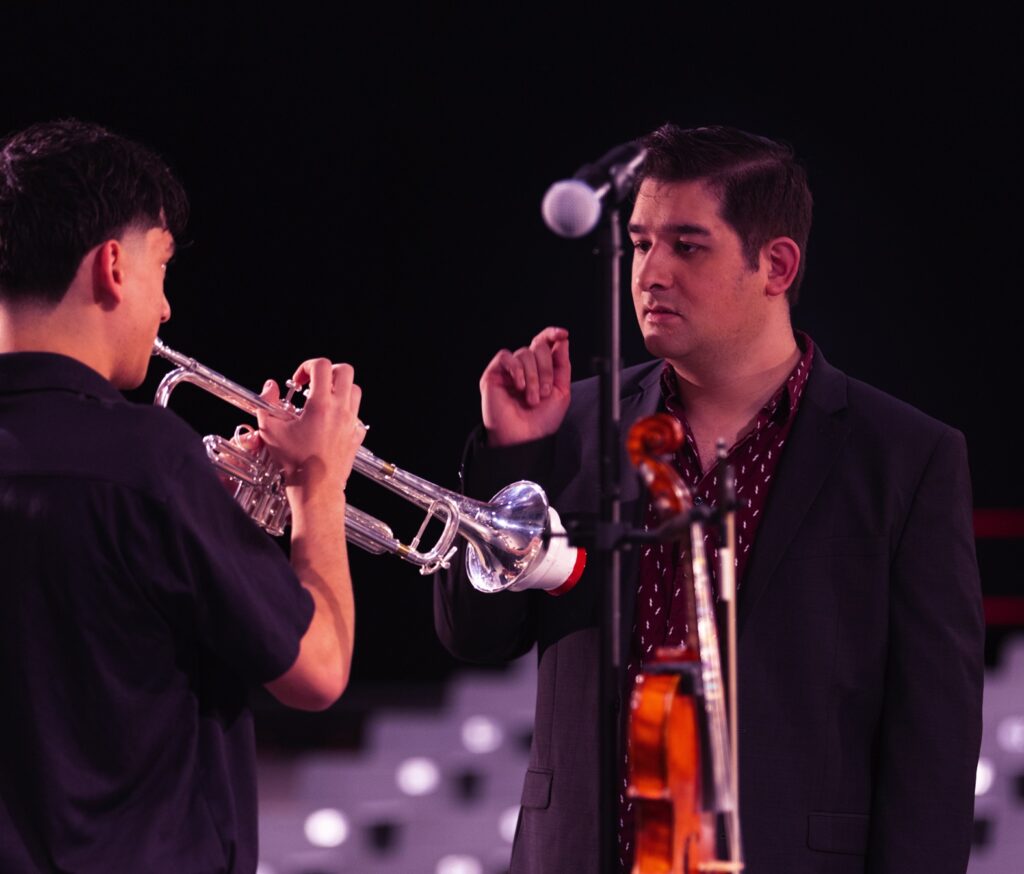Tagged Under:
When Kids Compare You to Their Old Director
Don’t despair when your students say, “This isn’t how Mr./Mrs. So-and-So did it.” Be consistent and keep showing up.
The first time I heard it, I felt like the air had been sucked out of the room. A senior rolled her eyes and said, “Our old director never made us do it this way.”
I’d barely finished the sentence about concert posture. Suddenly, I wasn’t me anymore — I was the failed replacement of a ghost. Few things rattle a new teacher faster. But the truth is: You’re not the old director. So, stop trying to be.

Acknowledge It, Then Move On
Kids test boundaries, patience, and they definitely test loyalty to the past. When someone drops the “our old director” line, don’t fight it or give a lecture about it. Acknowledge the change, then keep moving.
I say, “I know that’s how it was before. Here’s how we’re going to do it now.”
It’s short, simple and calm. I’ve tried the other approaches. I’ve over-explained, justified, even apologized for doing something differently — and every time, it felt like handing away a little authority. Students didn’t walk away impressed by my reasoning; they walked away knowing I could be rattled. Every time you defend your position like it’s on trial, you just make the ghost louder.
What surprised me is how quickly the moment passes if you don’t feed it. Kids are experts at baiting us. They’ll toss out a line just to see if you’ll bite. And if you don’t? Most of the time, they drop it and move on.

Be Consistent
Change feels huge to students at first. They’ll complain, compare and remind you that everything was “better” before. The good news is that kids adapt faster than you think.
If you’re consistent — same expectations, same routines, same consequences — the new way becomes the normal way.
I remember switching our rehearsal warm-up order during my first year. You would’ve thought I’d outlawed oxygen. The complaints were constant. “This isn’t how we do it.” “Why are we wasting time?” “Mr. _____ never made us start this way.”
For weeks, every rehearsal started with groans. I questioned myself more than once — was this small change really worth all the drama?
By October, the eye rolls slowed down. By December, no one remembered it was ever different. Kids who had fought it the hardest were suddenly explaining the routine to freshmen as if it had always been tradition.
That was my first real reminder: Consistency beats charm every time. You don’t need to be persuasive every single day. You just need to show up the same way long enough for it to stick.

You Don’t Need to Win Everyone
Early on, I wasted a lot of energy trying to get every single student on my side. In reality, you actually don’t need 100% buy-in. A handful of kids will be loyal to the last director no matter what. That’s not your problem to solve.
I had one trumpet player who would correct me under his breath every time I explained articulation. “That’s not how Mr. ___ said it.” At first, I bent over backward to prove myself — citing pedagogy, pulling up method books, even playing examples. It never mattered. He didn’t want my explanation; he wanted his old director back. (To be honest, I kind of wanted him back, too, at that point!)
Eventually I stopped chasing him. I kept teaching, kept setting expectations, kept showing up prepared. Over time, he stopped with the commentary. Not because I convinced him, but because he ran out of energy to care.
What matters is steadiness. Show up prepared. Keep your expectations clear. Treat kids fairly. Over time, even the skeptics usually soften — or at least stop caring enough to resist.
You don’t have to win them. You just have to show up over and over again.

When to Change (and When Not To)
So how much should you change from the last director’s way of doing things?
- If the old director was beloved and the program is strong? Don’t change a thing your first year. Learn the culture. Earn trust. You’ll have time to add your voice later.
- If the old director wasn’t respected and the program is weak? Change everything. Students actually expect it, and momentum can be your friend.
- If it’s somewhere in between? Start small. Pick a few things you care about most — maybe rehearsal flow, grading expectations or communication systems. Let the rest sit until year two.
In one of my first jobs, I walked into a strong program with deep traditions. Everything was organized, the kids had a routine, and the old director had retired on a high note. I had a list of “innovations” ready to go — new grading policies, new repertoire ideas, even a different way of arranging the chairs.
I’m glad I had a mentor tell me, “Don’t touch anything this year.” It was the best advice I received. Instead of trying to prove myself, I watched, listened and learned. By the end of the year, kids trusted me enough that the following fall, when I introduced a few small changes, it wasn’t a battle.
It’s not about proving you’re smarter. It’s about making changes slow enough that kids don’t revolt.

Ground Rules for Making Shifts
When you do start making changes, here are a few ideas that have worked for me.
- Explain the “why.” Students don’t need a speech, but a quick and simple explanation like “we’re tuning this way because it saves us rehearsal time” goes a long way. One time, I skipped this step and just announced a new policy. Within minutes, rumors were flying about me “not trusting” students or “trying to make things harder.” A 20-second explanation would have saved weeks of pushback.
- Hold the line. If you introduce a new policy, stick with it. Waffling just feeds nostalgia for the past. I once caved on a seating chart because seniors argued it wasn’t tradition. The next day, freshmen asked if they could opt out of sectionals “since it wasn’t tradition either.” Lesson learned.
- Pick your battles. Not every tradition needs to be overturned. If seniors want to keep their corny chant before concerts, let them. Save your authority for the things that matter musically or structurally.
- Involve students where you can. Give them ownership in decisions that don’t compromise your core values. They’re more likely to buy in if they have a say. I’ve let students vote on concert shirt designs, choose one piece per concert, even give input on rehearsal break routines. None of those decisions undermined the program, but they gave kids a sense that change wasn’t just happening to them.
None of this is magic. I’ve had changes bomb. I’ve explained the “why” and still had blank stares. I’ve held the line only to find out later that the line didn’t actually matter. That’s part of the job. Having some guardrails just makes the inevitable bumps less jarring.
___________________________
Hearing “This isn’t how so-and-so did it” stings because it feels personal. It’s not. It’s just students adjusting to change the only way they know how — by comparing.
The longer you teach, the more you realize you’ll eventually be someone’s “old director,” too. When that day comes, some kid will roll their eyes at your replacement and say, “Mr. Stinson never made us do it this way.”
That’s not failure. That’s just the cycle.
What matters is showing up as yourself, staying steady and letting students adapt — because they will.
Top photo by Abzal/AdobeStock















